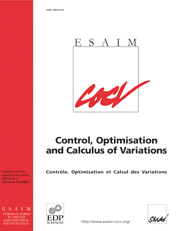Crossref Citations
This article has been cited by the following publications. This list is generated based on data provided by Crossref.
Dokuchaev, Nikolai
2011.
Mutual Fund Theorem for Continuous Time Markets with Random Coefficients.
SSRN Electronic Journal,
Dokuchaev, Nikolai
2014.
Mutual Fund Theorem for continuous time markets with random coefficients.
Theory and Decision,
Vol. 76,
Issue. 2,
p.
179.
Rodkina, Alexandra
and
Dokuchaev, Nikolai
2016.
On asymptotic optimality of Merton's myopic portfolio strategies under time discretization.
IMA Journal of Mathematical Control and Information,
Vol. 33,
Issue. 4,
p.
979.
Ni, Yuan-Hua
Li, Xun
Zhang, Ji-Feng
and
Krstic, Miroslav
2020.
Equilibrium Solutions of Multiperiod Mean-Variance Portfolio Selection.
IEEE Transactions on Automatic Control,
Vol. 65,
Issue. 4,
p.
1716.


